Rhomboid Minor Muscle
Table of Contents
Rhomboid Minor Muscle Anatomy
The Rhomboid minor is a small skeletal muscle on the back that connects the scapula with the vertebrae of the spinal column. Along with the Rhomboid major, it keeps the scapulae pressed against the thoracic wall.
Origin
It originates from,
- the inferior border of the nuchal ligament,
- the spinous processes of the seventh cervical and first thoracic vertebrae,
- the intervening supraspinous ligaments.
Insertion
It inserts into a small area of the medial border of the scapula at the level of the scapular spine.
Nerve supply
The dorsal scapular nerve (c5) supplies the muscle.
Blood supply
Rhomboid minor and major receive arterial blood from three sources:
Dorsal scapular artery and deep branch of transverse cervical artery. Both of these blood vessels stem from the thyrocervical trunk.
Dorsal branch of upper five or six posterior intercostal arteries, branches of the thoracic aorta.
Action
It acts as a retractor and rotator of scapulae.
Function
The action of the rhomboids muscles is scapular retraction around the scapulothoracic joint. Scapular retraction is the simultaneous sliding of the scapula superiorly and medially on the back of the thorax. This movement of the scapula rotates the glenoid cavity inferiorly, dropping the shoulder girdle. By opposing excessive scapular protraction, the rhomboids help to maintain a correct posture in activities like sitting, standing, and walking.
The contraction of the rhomboids fixes and stabilizes the scapula into position. This provides an anchor point from which various muscles of the upper limb can act and a fulcrum around which the upper limb can move.
Relations
It is situated above the rhomboid major and below the levator scapulae.
It is located superficially to the long spinal muscles and deep to the trapezius.
Variation
Although there is often a little gap separating it from the rhomboid major, there are times when the two muscles’ neighbouring edges come together.
Stretching Exercises
1. Sitting Rhomboid Stretch :
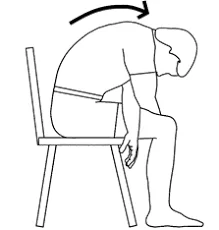
- Sit in a chair comfortably.
- Cross both arms over the abdomen.
- Then slowly bend the neck down towards the legs.
- Slowly lean forward keeping elbows straight trying to reach the floor.
- Hold for at least 30 seconds and repeat the stretch for 2-3 times.
Strengthening Exercises
1. Shoulder Blade Squeeze:
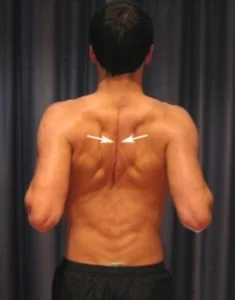
- Begin this exercise standing or sitting with your back straight.
- Your chin should be tucked in slightly and your shoulders should be back slightly.
- Slowly tighten your rhomboids by squeezing your shoulder blades together as hard and far as possible provided the exercise is pain-free.
- Hold for 5 seconds and repeat 10 times.
2. Darts

- Begin this exercise lying on your stomach with your arms by your side.
- Tighten your rhomboids by squeezing your shoulder blades together and slowly lifting your arms and chest off the ground, keeping your neck straight.
- Hold for 2 seconds at the top of the movement and then slowly return to the starting position.
- Perform 3 sets of 10 repetitions provided the exercise is pain-free. This exercise may be performed with palms facing up or down.
Related pathology
The rhomboid muscles can have a great impact on upper body posture and shoulder mechanics. Poor upper body posture typically includes a number of features. One is that the shoulders, and specifically the scapulae, tend to become protracted. This will often lead to pain in the upper back, especially along the medial border of the scapulae. Therefore, strengthening muscles responsible for scapular retraction, such as the rhomboids, will help relieve the pain and improve upper body posture.
The continuous pressure on rhomboid muscles can lead to postural strain making them dysfunctional. This can limit the superior rotation of the scapula and glenoid cavity, leading to poor shoulder mechanics.
This may further affected- soft tissues in the shoulder region can become injured and painful, especially during activities that involve arm elevation above shoulder height. eg. sporting activities like tennis and volleyball.
FAQ
The rhomboid minor muscles are responsible for the scapula’s rotation, elevation, and retraction. Additionally, they maintain the scapula in place at the posterior thoracic wall by extending its medial boundary.
To target the rhomboid minor, focus on exercises that involve scapular retraction and adduction. Examples include seated rows, face pulls, and scapular squeezes.
The shoulder girdle is made up of the latissimus dorsi, serratus anterior, sternocleidomastoid, trapezius, pectoralis, and rhomboid major and minor, a group of deep intrinsic shoulder muscles.

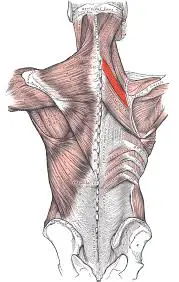
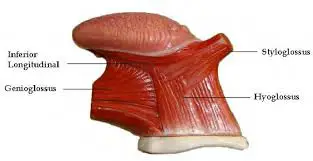
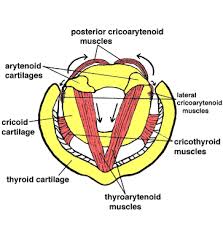
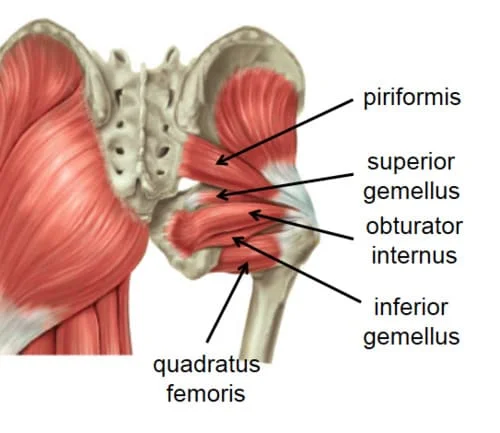
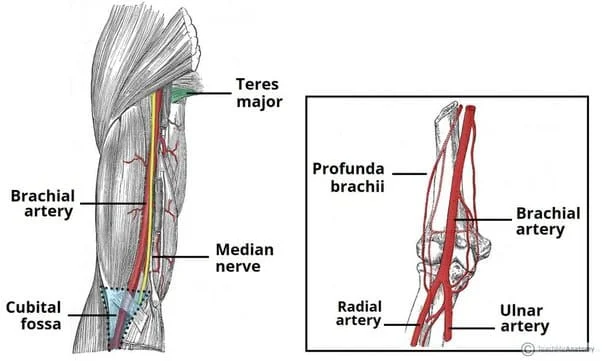
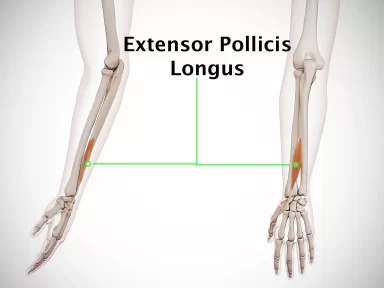
2 Comments